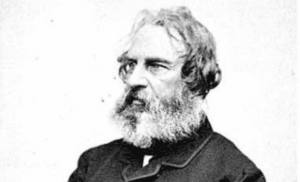Wouldn’t it be wonderful if we could simply (and legally) replace all of those COEXIST bumper stickers with another that reads CONTRADICT? High school teacher Andy Wrasman has recently written a helpful book that discusses the problems of pluralistic thought and why Christians should remember that even though religious believers of all types should coexist harmoniously, the essential claims of the major religions stand in opposition to one another.
In Contradict: They Can’t All Be True, Wrasman distinguishes between two types of pluralism: social and literal. Social pluralism is used to describe diversity in society. Literal pluralism is the view that everything is one, or true, despite apparent distinctions (5). Wrasman mainly interacts with literal pluralist notion that “all religions are spiritual paths leading to the same destination.”
Twenty Facts About the Five Major Religions and the Law of Noncontradiction
It is important for Christians to understand the beliefs of the major religious systems. Wrasman aids us in this area as he presents “key figures, places, events, historical dates, doctrines, and rituals for Hinduism, Buddhism, Judaism, Christianity, and Islam” (19). From Vishnu to the Eightfold Path, Wrasman helps readers understand the central beliefs of these religions.
Wrasman also explains the important role that the law of noncontradiction plays in religious truth claims (64). This law helps us to see that if “a statement is true in one context, the exact opposite of that statement cannot also be true in the same context” (64). Wrasman goes on to demonstrate the contradictory beliefs that abound between the major world religions and explains the need for a solid testing method that evaluates all religious truth claims.
A Religious Litmus Test That Works
Wrasman suggests that each religion should be subjected to a religious litmus test. This test, which he draws from history professor Chauncey Sanders’s work, consists of an external, internal, and bibliographical method (92). Wrasman then shows the overwhelming evidence that supports the accuracy of the New Testament documents. With more than 5,000 fragments or copies of the New Testament available, it is hard to see how the New Testament documents do not pass the bibliographic test with flying colors (106).

Contradict: They Can’t All Be True
Andy Wrasman
Wrasman then turns to examine the internal and external evidence of the New Testament. After a long journey of exploring both the internal and external claims, Wrasman concludes that the Gospels pass the internal test because they were authored by eyewitnesses or those who used eyewitness testimony (151); they also pass the external test because authors outside the Bible affirm the claims and authorship of the Gospels (151–152). So Wrasman concludes that Christianity does indeed pass the religious litmus test.
Evangelism and the Contradict Movement
Wrasman concludes that after hearing the historical claims of the Gospels and evaluating the evidence, one must decide whether or not to submit to the only unified message that rings true (158). According to Wrasman, Christianity stands out among all the other religions because it is the only paid religion (Jesus was your substitute) and the only religion from God himself (168–169). As he concludes, “Christianity has the ring of truth with its detailed disclosure of facts, consistent message, fulfilled prophecy, and unique standing as the only religion that offers divine redemption through the work of its founder, who claimed to be God incarnate.”
In the final chapter, Wrasman discusses 20 of the most common questions he’s encountered while sharing the “contradict message” on college campuses. With evangelistic experience on multiple campuses, this section is particularly helpful,
Conversation Starter and Guide
Contradict will help a lot of conversations get started. Wrasman provides Christian believers with a great starting point for understanding and evaluating many of the world’s religions. He should be commended for writing a substantive apologetic book that’s also practical on so many levels. The strongest sections are where he offers a concise guide on interacting with skeptics and other religious adherents. Many readers will find Wrasman’s sections on the “20 facts on the 5 major world religions” and “20 questions that are most commonly asked when sharing the contradict message” invaluable.
This is a solid book apologetically, theologically, and practically. I pray it will open the eyes of many believers to the importance of evangelizing in a pluralistic age.




























